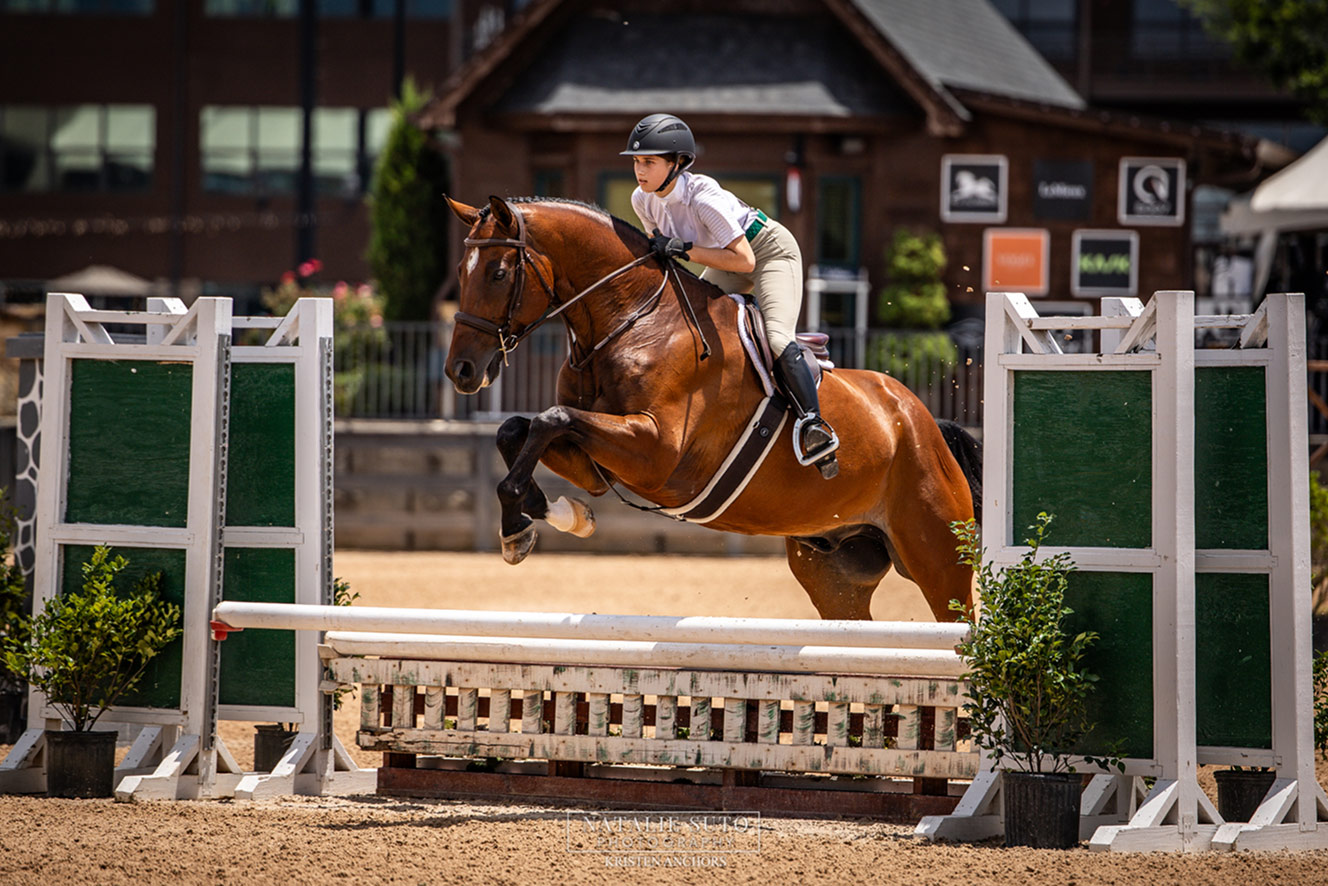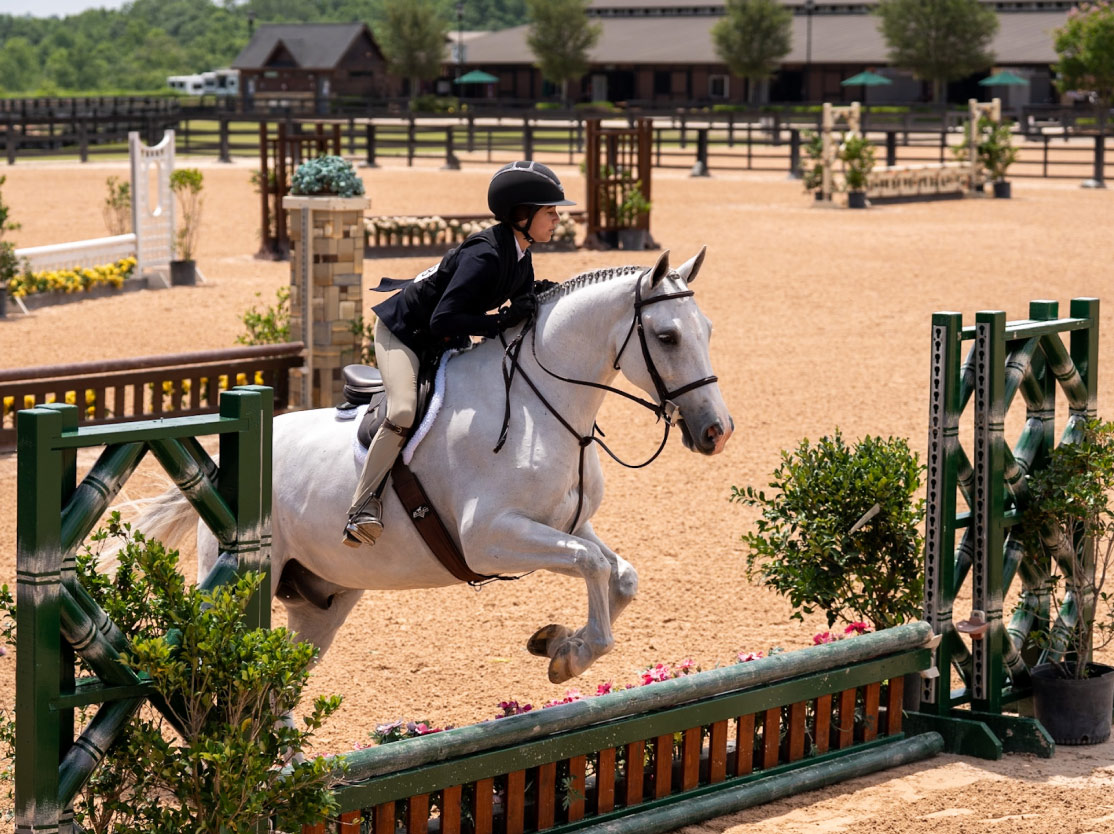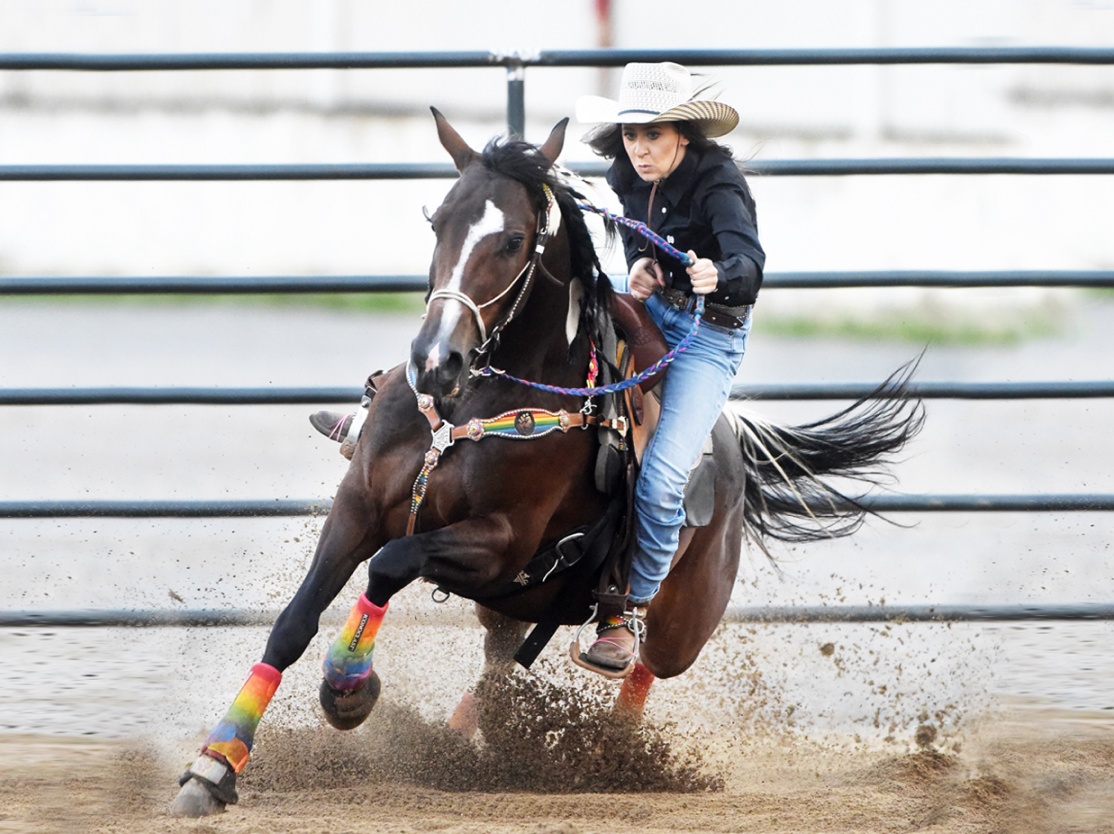
Spotlight Rider: Abbey Lynn

From Pittsburgh Roots to Arizona Rodeos: Western Rider Abbey Lynn on Her Journey, Art, and Barrel Racing
Barrel racer, rodeo competitor, artist, and advocate—Abbey Lynn wears many hats, and she wears them well. Growing up in Pittsburgh, Abbey found her way to horses through 4-H and local shows. Today, she’s based in Arizona, deeply immersed in the western riding scene. Her journey has taken her from rescuing horses to racing them, all while using her artistic talents to tell the stories of the animals and people she meets along the way. I sat down with Abbey to learn more about what fuels her passion, how she balances a busy life, and what advice she has for others in the sport.
1. How did you first get involved with horses?
I started riding at just four years old, taking lessons from a family friend when we could afford it. By nine, I joined 4-H and got serious about it. I began in western pleasure and horsemanship, then eventually added barrels and gymkhana into the mix. I didn’t come from money or a horse family—I just knew this was what I was meant to do, and I never let go of it. I found a way to make it happen.

2. What was your first horse like?
The first horse I ever leased was Red, a 1991 chestnut Appaloosa gelding named “CTJ Red Prince.” He was one of those solid, been-there-done-that types who gave me the confidence to really start riding. But the first horse I actually owned is Cookie, my 2010 bay Paint mare. She came into my life in 2015 completely unstarted, and I’ve had her ever since. She was dropped into my lap for free. I sent her to a trainer to get going, then took the reins from there… training, learning, and growing right alongside her. She’s not just my first horse—she’s the one who made me the rider I am now.
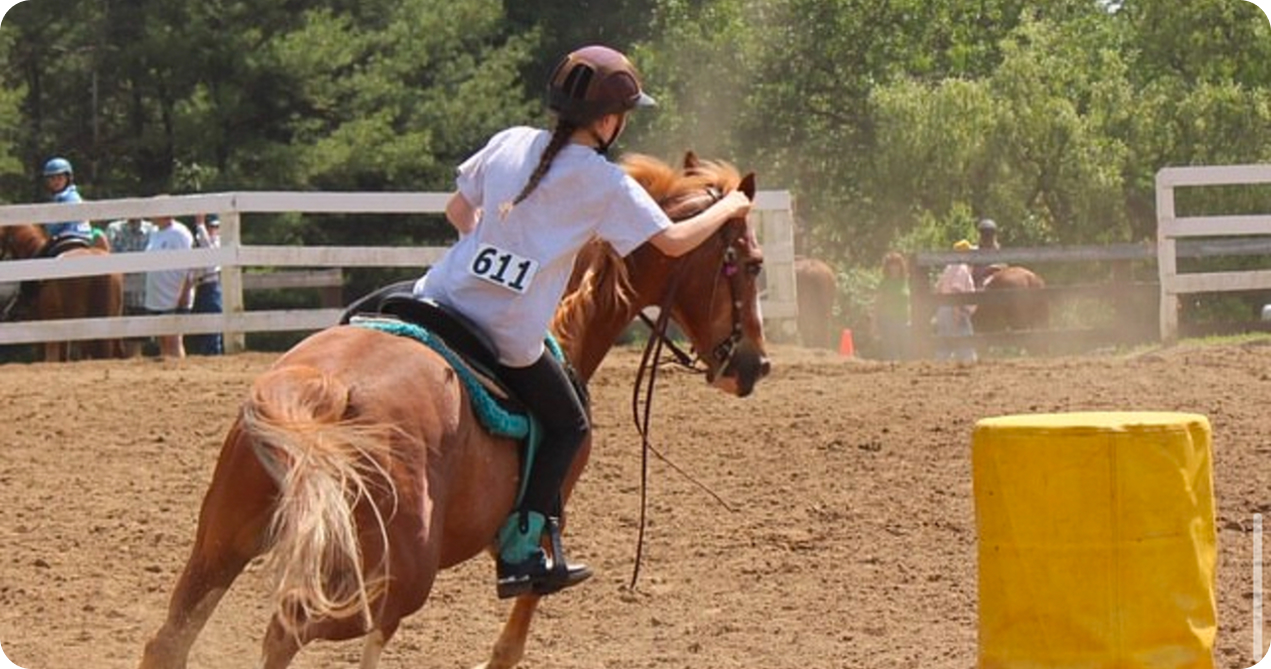
3. You grew up in Pittsburgh, which isn’t exactly known as a western riding hub. How did you find your way into the rodeo world?
That’s true—it’s not the first place people think of when they hear “rodeo.” But once I got older, I started going to local fairground rodeos and barrel races. That’s where it really clicked for me. I’d research everything I could about barrel racing—watching pros, breaking down runs, studying bloodlines—I was obsessed. I also received two scholarships from the Optimum Youth Equestrian Scholarship program, which supports riders from underrepresented backgrounds, including LGBTQ+ youth. That helped fund my move and fueled my drive to keep pushing. I moved to California in 2021 to work under a futurity barrel trainer, and we started an equine rescue together. Later, in 2024, I moved to Arizona where I was an assistant for an NRHA trainer. None of it was handed to me—I had to dig deep, but I wouldn’t trade that for anything!
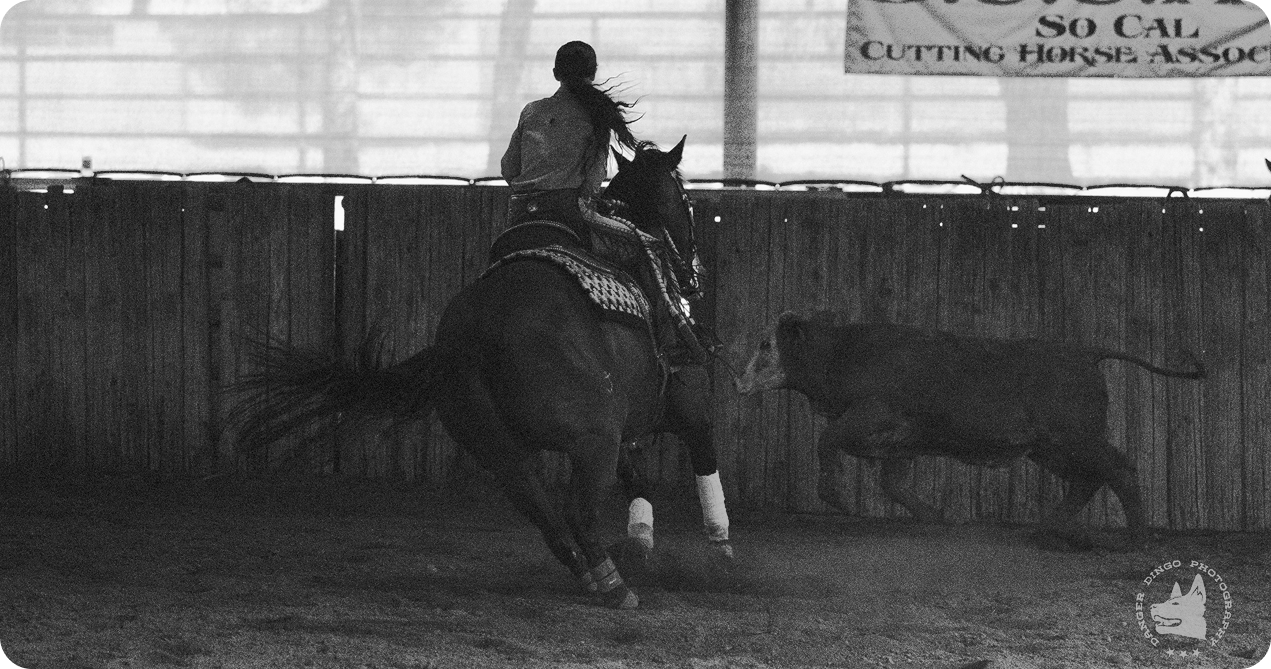
4. What drew you to barrel racing specifically?
The adrenaline, no question. But it’s not just about speed—it’s about control. Barrel racing pushes you to be sharp, dialed in, and completely in sync with your horse. I love that challenge. You have a split second to make or break a run, and it teaches you a lot about pressure, timing, and trust.
5. What’s something people might not realize about barrel racing?
That it’s a thinking game. People love to say “just run fast and turn,” but they have no idea how much feel it takes. You’re adjusting your hands, your seat, your mindset every step of the run. And no two horses are the same. A free-runner needs a completely different ride than a ratey horse. It’s technical, it’s mental, and it demands way more finesse than people give it credit for.
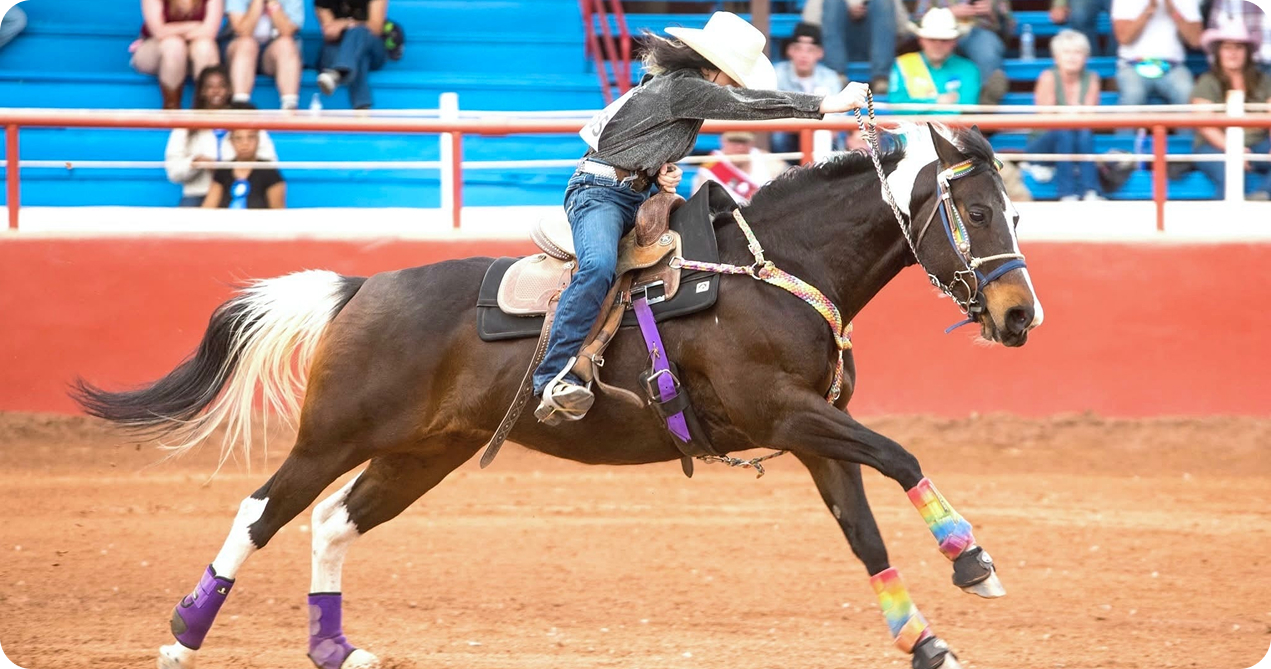
6. Do you have a pre-race routine or any good luck rituals?
I don’t have a lucky charm or anything, but I do check my cinch at least five times. Before I run, I like to watch a horse that moves similar to mine just to lock in where I need to be. It reminds me to ride smart, not just fast.
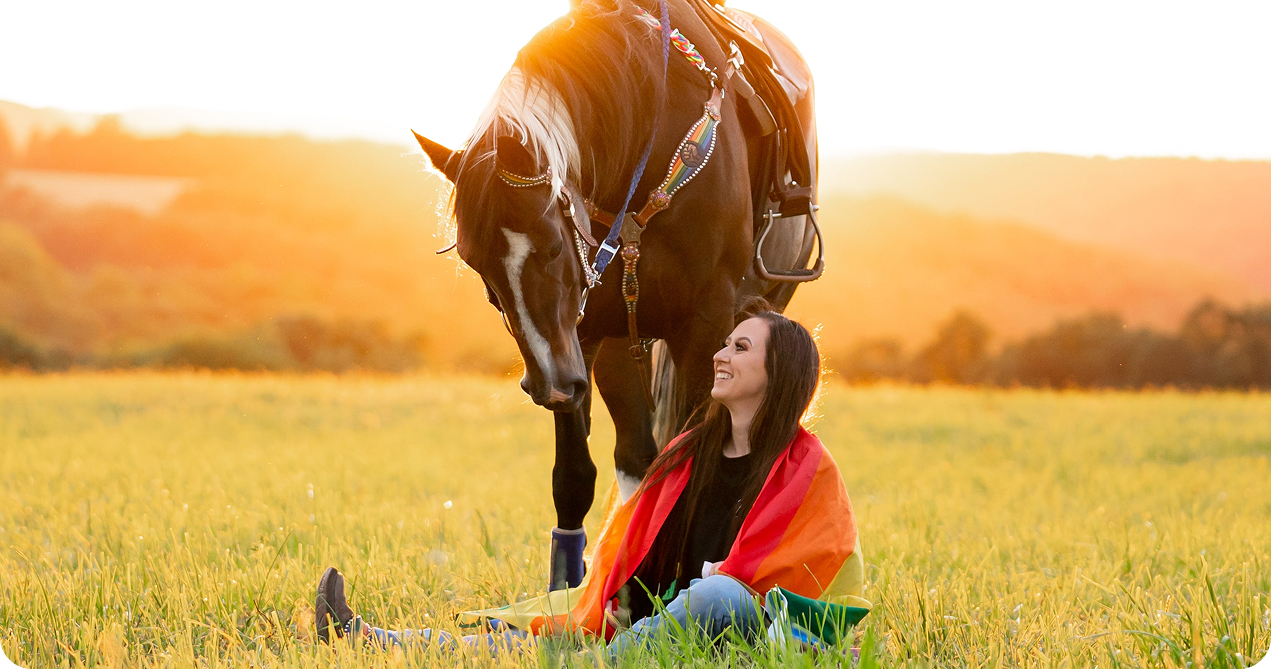
7. Who in the horse world inspires you?
Dana Mendoza, hands down. We started an equine rescue together in Southern California back in 2021—Hooves ‘n Hearts Equine Rehab & Rescue—when I moved out there to assist in training her futurity barrel horses at Legacy Equine Facility. We’ve been through a lot, good times and rough patches… but no matter what, she’s been one of my biggest supporters. Even now, with us in different states, we still work together. She’s taught me a lot about resilience, horsemanship, and staying true to your passion. She’s like another mom to me. We’ve got big plans in the works with a 2021 AQHA filly, “FrenchDashTaFreckles.” She’s bred right and built for it, and I can’t wait to see where she takes us.
I’m also incredibly inspired by Jennifer McMaster, who started my mare Cookie under saddle and played a huge role in shaping the rider I’ve become. She’s based in Butler, Pennsylvania, and her program is one of the best I’ve seen. Her training is fast, effective, and fair—you can tell she genuinely cares about the horses, not just the results. She’s the one who really sparked my passion for working with horses that need a second chance. I hope to be as skilled and grounded as she is one day.
And right now, I’m learning from Wendy Morris Tank—an incredible bronze sculptor, artist, and horsewoman behind WMT Art. She trains and breeds everything from Vanners to Friesians, and the way she blends creativity with horsemanship is something I really admire. Her work is featured in major events like the NRHA Run for a Million, where she creates the custom bronze trophies. Her eye for detail, both in her art and in the way she works with horses, pushes me to grow on all fronts.
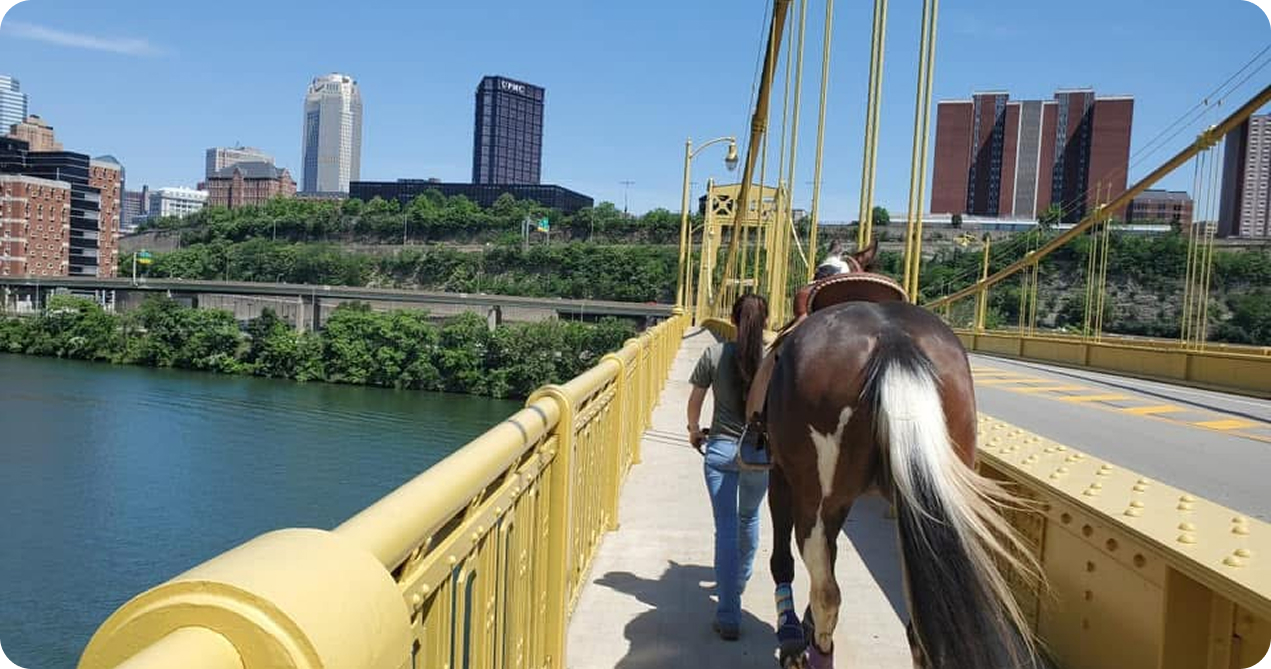
8. What’s one of your proudest moments in your riding career so far?
Riding in the Pittsburgh Pride Parade with my horse Cookie is one of my favorite memories. She was decked out in rainbow tack, and the response from the crowd was unreal. It wasn’t just about me—it was about visibility. Showing that queer riders exist in the western world, that we belong here. I’ll never forget the way that felt.
We ended up going viral online. Since then, I’ve had people message me to say I’ve made them feel safer being themselves in this industry. That means everything. It led to real friendships and helped me realize how much visibility matters.
Another proud moment was running my first actual rodeo in Butler, PA back in 2021 with Cookie. We ended up in the newspaper that day, which still makes me smile. I’ve won a few buckles on her too, and every single one means something. We’ve had to figure out a lot together. I’ve always taken pride in working with the ones nobody expects much from… the horses that are overlooked, or the ones that just need a second shot. That kind of win hits different.
9. What advice would you give to someone starting out in western riding or barrel racing?
Don’t get caught up comparing yourself to everyone else. Especially in barrels, it’s easy to feel like you’re behind if you’re not on a $50K horse or posting big times right away. But your path is your own. Focus on progress, not perfection. Ask questions, take the long way if you have to, put the work in, and keep showing up. The right people will notice.
Don’t let anyone make you feel like you don’t belong. If you have the passion and drive to keep going through ups and downs, that matters more than anything.
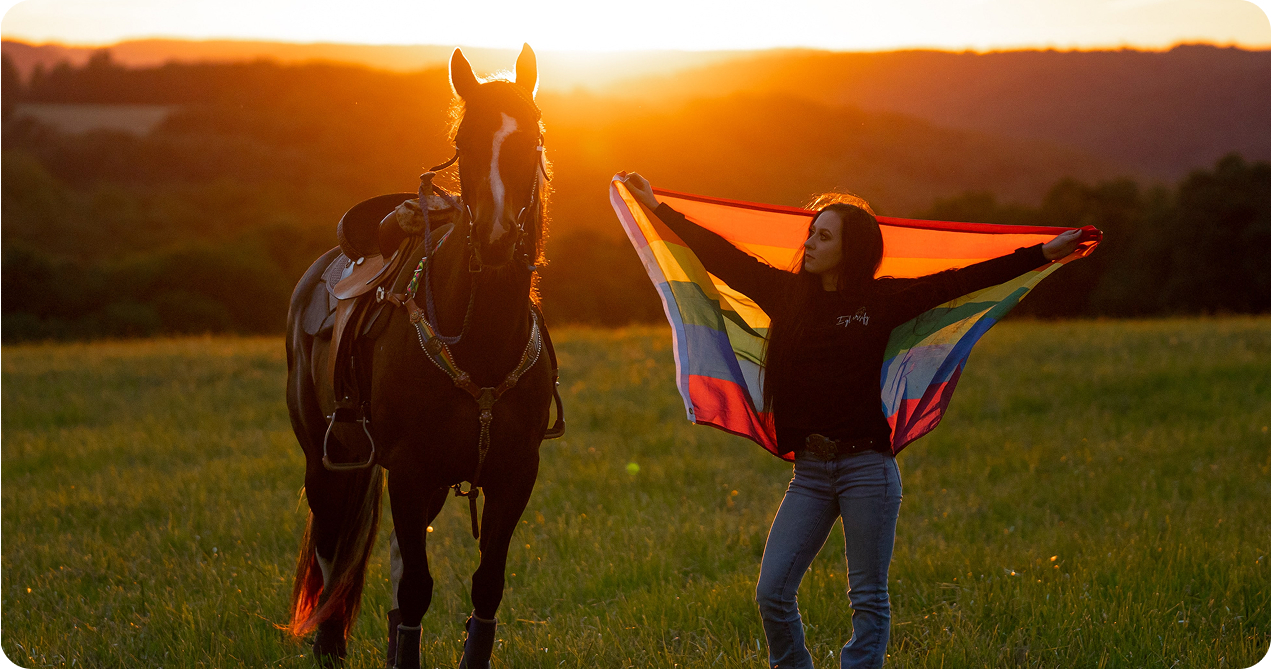
10. Have you noticed anything about Horse Spot that you think could benefit the western world?
Definitely. So many rodeos and jackpots still rely on paper entries, word of mouth, or last-minute updates. It can be hard to stay organized, especially if you’re on the road. Horse Spot could really streamline things. Having run times, entry lists, and alerts all in one place would make the sport feel more connected and more accessible, especially for newer riders.
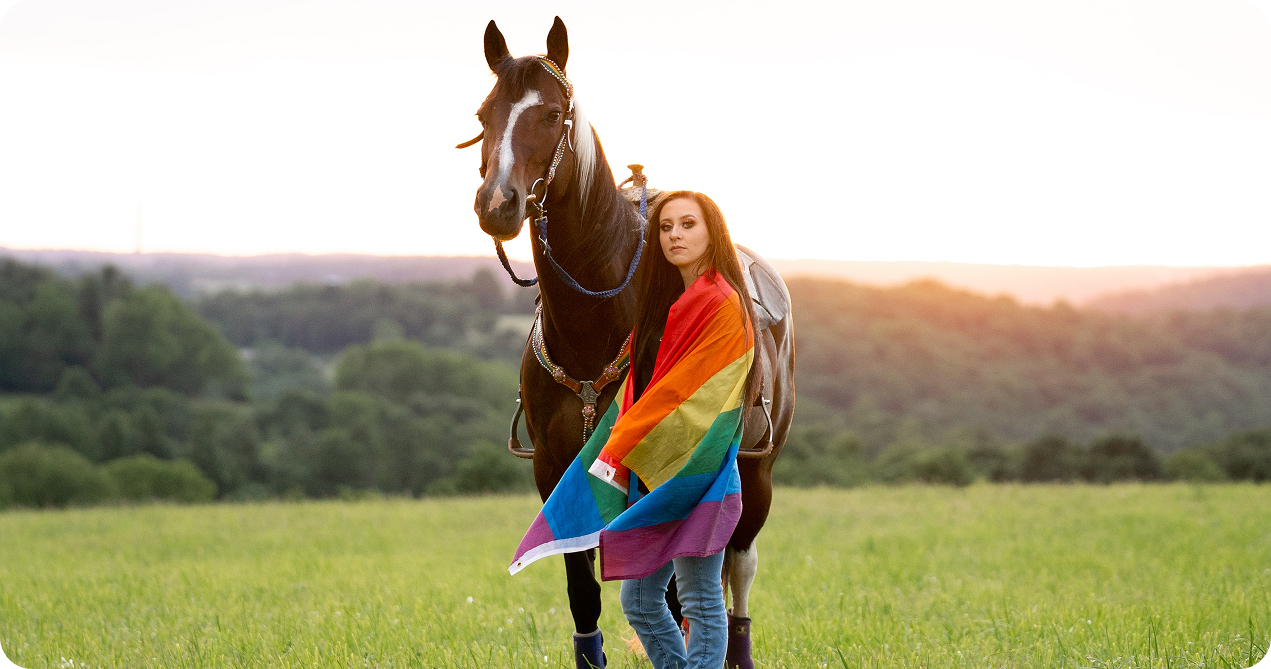
11. What’s next for you?
More rodeos, more art, and a lot more growth. I’m continuing to build my brand and business while helping other riders where I can. Long term, I want to make this industry more accessible—especially for people who didn’t grow up with a barn in their backyard, a horse trainer for a parent, a six-figure setup, or a last name that opens doors.
Having heart is part of it—but let’s be real, it’s not enough on its own. I’ve had to make connections from the ground up and shove my foot in every door I could find. If I can help someone else do the same, or even make that path a little less uphill, then I’m doing something right.
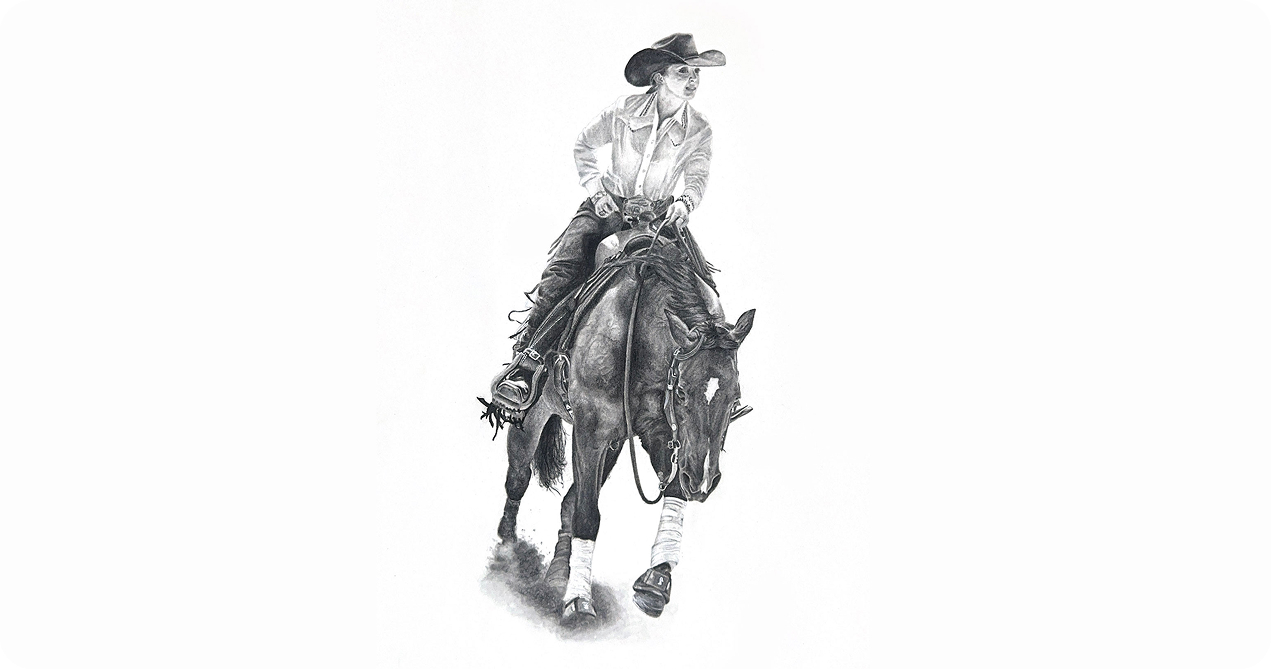
Photo Credits:
Cover Photo: First Rodeo in Butler, PA | July 2021
#1 SoCal NRCHA Competition in Temecula, CA | March 2023
#2 Abbey aboard Red barrel racing at a local 4-H show in North Park, PA | August 2014
#3 SoCal NRCHA Competition in Temecula, CA | Photo by Danger Dingo Photography | March 2023
#4 Assistant Training for an NRHA Trainer in Rio Verde, AZ. | March 2024
#5 Abbey aboard Titan at the NBHA Super Show in Buckeye, AZ | Photo by Lexi Smith Media | January 2025
#6 Abbey aboard Cookie barrel racing at the IGRA Rodeo in Laveen, AZ | Photo by Jessica Lian Photography | February 2025
#6 Abbey with Cookie at her barn in Kittanning, PA | Photo by Erica Hilliard Photography | June 2021
#7 Abbey walking Cookie across the South Tenth Street Bridge for the Pittsburgh Pride Parade | June 2021
#8 Abbey aboard Cookie in Downtown Pittsburgh during the Pride Parade | June 2021
#9 Cookie close-up in Downtown Pittsburgh during the Pride Parade | June 2021
#10 and #11 Phoenix Pride Artist Competition (2nd Place) || June 2025
#12 and #13 Cookie's POV in Downtown Pittsburgh during the Pride Parade | June 2021
#14 Abbey with Cookie at her barn in Kittanning, PA | Photo by Erica Hilliard Photography | June 2021
#15 Abbey with Cookie at her barn in Kittanning, PA | Photo by Erica Hilliard Photography | June 2021
#16 “The Reiner” | Art by Abbey (Work In Progress)

Lindsay Lenard
Product Design
Lindsay is the co-founder and lead product designer at Horse Spot. She loves to use her creative storytelling to inform and inspire others. Lindsay is a design expert with experience working on design systems for major companies like McDonald's and YC backed startups. She is a Webby award nominee. When she's not obsessing over fonts and figma, she's at the barn enjoying every moment with horses.

